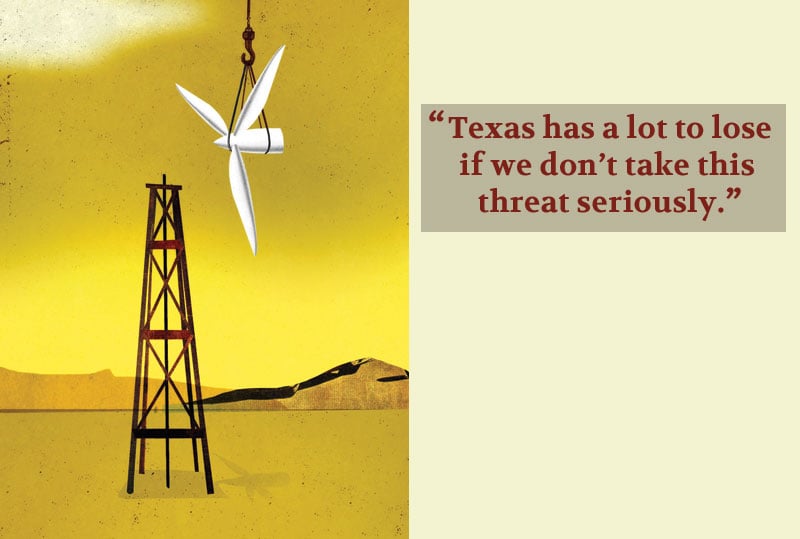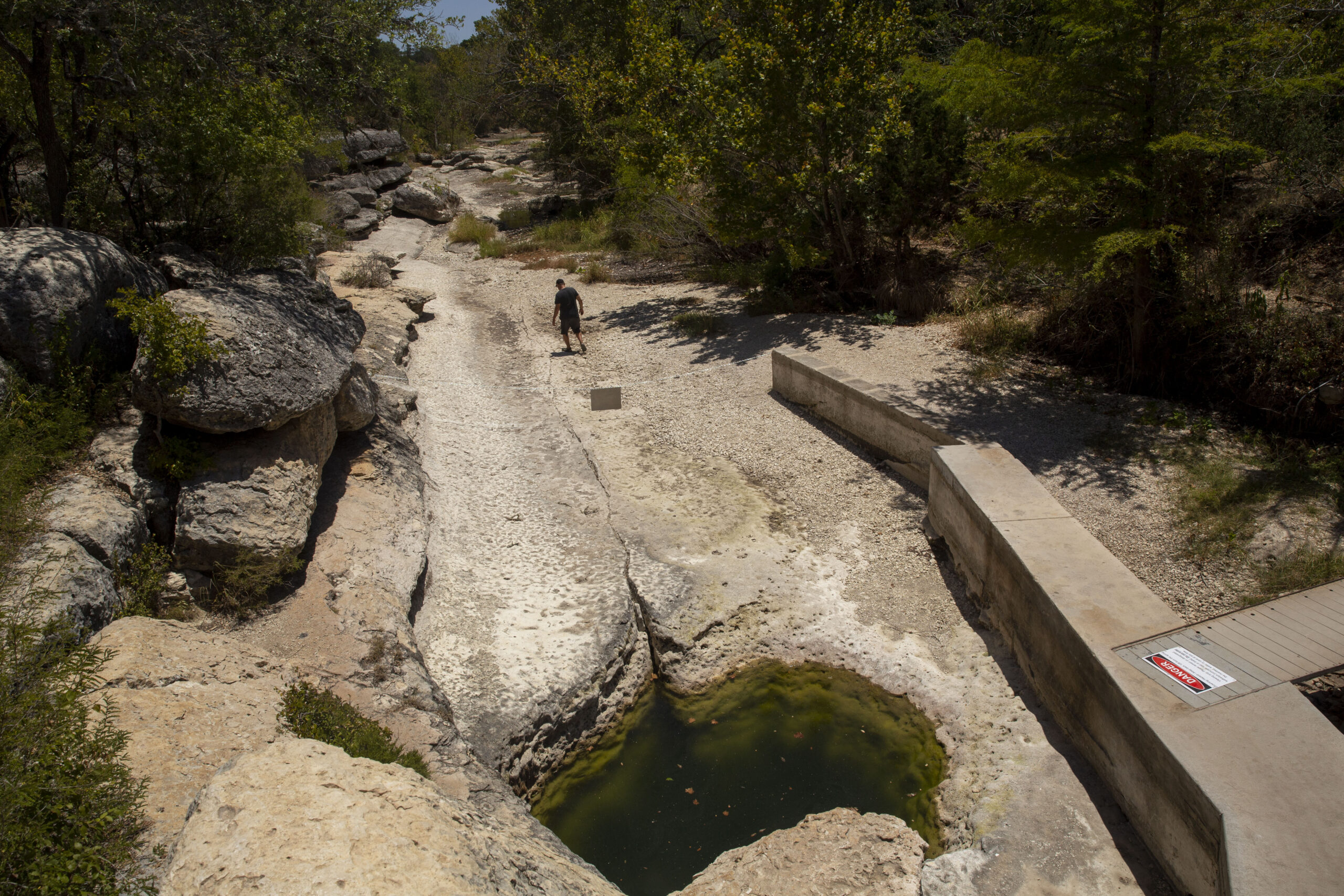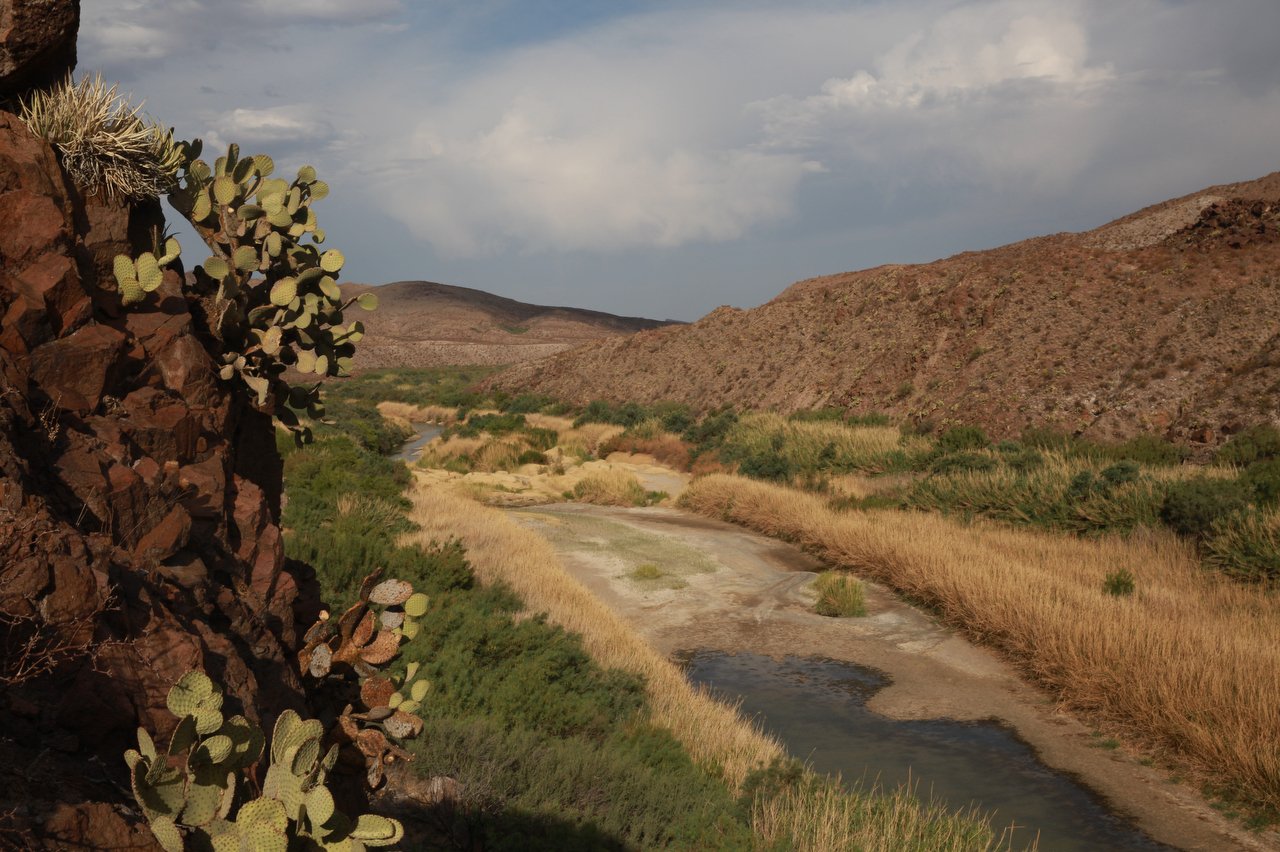
The Next 60: Cutting Carbon and Reinventing the Economy
A version of this story ran in the December 2014 issue.
Editor’s note: This essay is part of our 60th anniversary issue, which can be viewed in full here.
The story of Texas is the story of energy. Over the last century, Texas’ natural gas and oil resources have changed the geopolitical planet, driving innovation and research far beyond our borders and establishing the prosperous economy we enjoy in Texas.
That economy grew from a seemingly endless supply of oil and gas. Now we know that that oil and gas are not endless. We also know that their use has consequences we never imagined.
The science is clear: The climate is changing as a direct response to human emissions of carbon dioxide and other heat-trapping gases. As a result, our planet is running a fever.
Texas is uniquely vulnerable to a changing climate. It’s no longer an issue that matters only to the polar bear in the Arctic or to poor people living on low-lying islands in the South Seas. We are already in the crosshairs of nearly every type of weather- and climate-related natural disaster you can imagine. Climate change is ratcheting up our vulnerabilities to unprecedented levels.
Climate change is evident in our rising sea levels, stronger hurricanes, record-breaking heat waves, severe droughts and heavy downpours. We care about climate change because it threatens us: our farms and ranches, our cities, our water, our health, and ultimately even our way of life.

Texas has a lot to lose if we don’t take this threat seriously. If we don’t reduce and eventually eliminate these unnatural amounts of carbon dioxide we are pumping into our atmosphere, the consequences will be severe. But Texas also has a lot to win in this new era of carbon constraints.
Texas has enough wind power and solar energy to power the nation. Texas is the No. 1 producer of wind energy in the United States, with nearly 13,000 megawatts of installed power and over 1 million megawatts of as-yet-untapped potential. Last spring, Texas broke record after record for the most electricity ever generated by wind energy in the state. Texas isn’t a leader in solar energy—yet—but there are over 300 companies in the state working to change that, and Texas is the fastest-growing in terms of new solar energy. According to the Solar Energy Industries Association, Texas is the state to watch, with enough solar potential to power not just the United States, but the entire world.
Texas has a lot to lose if we don’t take this threat seriously. But Texas also has a lot to win in this new era of carbon constraints.
What does this mean for Texas? Texas industries are perfectly poised to gain economic advantages thanks to abundant resources and existing expertise. Our inventors, innovators and entrepreneurs—who are building solutions to these problems as we speak—will create jobs and bring further economic benefits to Texas. China is currently the world leader in wind energy and second in solar behind Germany, but the new climate change and clean energy agreement between the two countries is intended to pave the way toward cooperation rather than competition. It’s hard to imagine a future for Texas where energy doesn’t play a central role. The question is whether we can rise to the challenge of preparing for a changing climate and a carbon-free economy.


